目录
5 60 本教材点评
5.9 偏微分方程 6 本
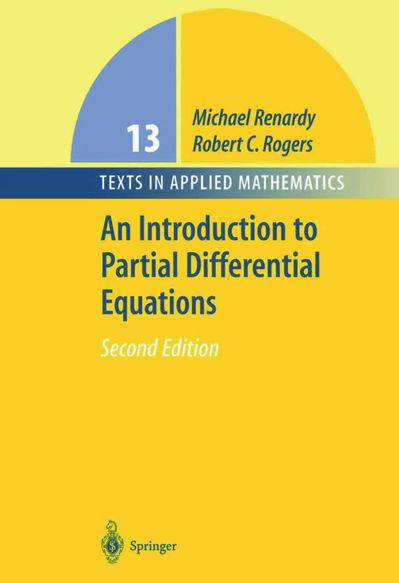
《An Introduction to Partial Differential Equations》
作者:Renardy, Michael; Rogers, Robert C.
出版商:Springer
出版年:2004
ISBN:9780387004440
适用范围:高年级本科生,研究生
推荐强度:9
作者简介:Michael Renardy(弗里吉亚理工大学数学名誉教授,研究领域为非牛顿流体力学和偏微分方程,出版多本研究专著。其于1985年获美国总统奖,2012年成为美国数学学会会员)
Rogers, Robert C(弗里吉亚理工大学数学系副院长、教授,马里兰大学数学博士,威斯康星大学麦迪逊分校博士后,其研究领域为流体力学和偏微分方程)
书评:
Professors Renardy and Rogers’s An Introduction to Partial Differential Equations (2nd ed.) is a very careful exposition of functional analytic methods applied to PDEs. The authors’presentation is more traditional, resulting in a self-contained text that can be used as the basis of an advanced course in PDEs or as an excellent guide for self-study by a motivated reader.
Prof. Arnold uses the lecture-style format of the book to illustrate the connections between PDEs and their roots in continuum models of mathematical and theoretical physics. Prof. Arnold states his distress in finding that topics such as variational principles, fundamental solutions, eigenvalues and eigenfunctions, and wave-particle duality, which have been such a rich source of mathematical problems, have generally been so sadly neglected in the mathematical sciences, resulting in courses in these subjects disappearing from the curricula of a number of universities.
The authors note that mathematical models arise in every field of science and considerers a core area of mathematics, a sentiment with which we agree. They state in their preface that, “Unfortunately, in the standard graduate curriculum, the subject is seldom taught with the same thoroughness as, say, algebra or integration theory.”
We would like to disagree with this statement and suggest that, given that a field as broad as PDEs requires a breadth that few others demand, emphasis varies. What is fundamental to one researcher is peripheral to another. While the text under review will constitute an excellent basis for an advanced course in functional analytic methods in PDEs, not every course in PDEs has to follow this path. This is a book in which the mathematical methods and tools needed by the authors are thoroughly developed, resulting in a very limited effort devoted to establishing connections with applications or the origin of some of the basic equations. Consequently, knowledge of the material in this book will not help in setting up models, nor would it be a good guide for interpreting solutions. Instead, the result is an excellent self-contained text that act sand feels like a standard book in a specific area of mathematics.
This is the second edition of Renard and Rogers’s well-known text. There have been a few cosmetic changes made to the first edition. For example, the references have been gathered together and placed at the end of the book. Some additional references pointing toward the applications alluded to in the text would have been welcome. A number of misprints were corrected, although one still occasionally finds some.
As the authors recognize in the introduction, the first four chapters are essentially independent of the rest. For example, Chapter 2 contains the Cauchy–Kovaleskayatheorem and the Holmgren extension, while Chapter 3 is an overview of conservation laws. Discontinuities in the solutions are presented under the somewhat surprising title of “Blowup of Smooth Solutions.” Wouldn’t “Breakdown of Smooth Solutions”
be a better title, since the values of the solutions do not necessarily grow? Some issues on uniqueness of weak solutions are also discussed, with limited references (e.g., the recent book of Deforms [1] is not mentioned). Chapter 4 gives a brief introduction to maximum principles.
The core part of the book, Chapters 5–11, can be broken into two parts. The first, Chapters 5–8, provides an introduction to distribution theory, basic spaces of functions, a new (to the second edition) chapter on Soboleva spaces, and operator theory.
Starting with Chapter 9, the methods of functional analysis developed in Chapters 5 through 8 are used to obtain general existence theorems and regularity properties of solutions to linear and nonlinear elliptic equations as well as parabolic and hyperbolic equations. However, the treatment of evolution equations, including parabolic and hyperbolic equations, is very limited.
Finally, Chapter 12 gives an introduction to semigroup theoretic methods. This chapter includes an excellent treatment of the Hille–Yoshida and the Lummer–Phillips theorems, cornerstones of the basic theory of semigroups. Applications of these methods to symmetric hyperbolic equations and to the Schr¨odinger equation are also included.
The Renardy and Rogers text contains a large number of problems that tend to be theoretical in nature, involving the proof of some, typically standard, results. For students, these problems will be challenging and interesting. There are very few problems of a computational nature. Reflecting the emphasis of the book on functional analytic methods, Chapter 8 on operator theory includes 57 problems, whereas the chapter on evolution equations has only 11. As a consequence, a student who masters this text and who works even a quarter of the problems will have an excellent grasp of theoretical PDEs, especially those parts of the theory based on functional analysis and distribution theory, but will lack computational techniques. Anyway,we highly recommend this book.
Renardy教授与Rogers教授的An Introduction to Partial Differential Equations(第二版)详细阐述了泛函分析方法在偏微分方程中的应用。作者采用了传统的教学方式,使本书自成一体,它既可以作为进阶偏微分方程课程的基础,也可以指导一个积极的读者自行学习。
Arnold教授用这本书以讲座的形式来说明偏微分方程和它们在理论物理与数学的连续体模型中的根源的联系。Arnold教授陈述了他的苦恼,他发现诸如变分原理、基本解、特征值、特征函数以及波粒二象性等内容,明明一直是数学问题的丰富来源,却在数学中被普遍忽视,导致与科目相关课程正从一些大学中消失。
作者指出,数学模型出现在每一个科学领域,并认为与此领域的核心相关,我们同意这种看法。他们还在序言中说:“不幸的是,在通常的研究生课程中,这门课很少被讲得像代数或积分理论那样透彻。”
我们不同意这上述说法,因为偏微分方程领域十分广泛,重点各不相同,需要知识的广度,这在其他学科中是很罕见的,所以偏微分课程不如代数或积分理论那样透彻并不是一种不幸。对一个研究者来说最基本的东西对另一个研究者来说却是不重要的。虽然本书将为偏微分方程泛函分析方法的进阶课程打下良好的基础,但并非每门偏微分方程课程都必须遵循本书的方式。在这本书中,作者将重点放在了所需要的数学方法与工具上,导致在与或某些基本方程的起源建立联系等应用方面只下了非常有限的工夫。因此,本书的知识将无助于建立模型,也不是一个很好的解决实际问题的指南。相反,它是一本出色的自成体系的教材,在特定数学领域足以成为标杆。
本书是Renardy与Rogers著作的第二版,相比第一版做了一些修饰性的改动。例如,参考文献被收列于书末。一些关于书中内容实际应用的参考文献或许会广受欢迎。一些印刷错误也被修正,即使偶尔才能发现一些。
正如作者在引言中提到的那样,前四章实际上是独立于其他章节的。例如,第2章包含了Cauchy–Kovaleskaya定理和Holmgren延拓,同时第3章则简要介绍了守恒定律。解的不连续性在夸张的题目“光滑解的爆炸”下被阐述。“光滑解的崩溃”难道不是一个更好的题目吗?因为解的值并不一定增长。此章还讨论了弱解的唯一性,并给出了一些参考文献。第4章简要揭晓了最大值原理。
本书的核心,第5章至第11章,可以被划分为两部分。第一部分,第5至第8章介绍了广义函数论,函数的基本空间,有关Sobolev空间的新的一章(第二版),以及算子理论。
第9章开始,第5至8章建立起的泛函分析方法被用于解的一般存在性定理,以及线性与非线性椭圆方程、双曲方程和抛物方程解的正则性。然而关于演化方程,包括抛物方程与双曲方程的内容却是非常有限的。
最后第12章介绍了算子半群理论方法。这章很好地介绍了Hille–Yoshida定理与Lummer–Phillips定理,它们是半群理论的基石。这些方法在对称双曲方程和Schrödinger方程中的应用也被包含在内。
Renardy与Rogers的教材包括大量习题,它们往往是理论性的,涉及一些经典结论的证明。对学生而言,这些问题不但有趣,还极富挑战性。与计算相关的问题则不多。有关算子理论的第8章包含了57道习题,而有关演化方程的那章却只有11道,反映了本书对泛函分析方法的重视。因此,完全掌握正文部分并能做出四分之一习题的学生将对理论偏微分方程有深入的理解,特别是在泛函分析方法与广义函数方面,但会缺乏计算技巧。无论如何,我们都强烈推荐这本书。
点评人:Ronald B. Guenther(美国俄勒冈州立大学数学系名誉教授)
资料整理:冯远航
翻译:赵旭彤
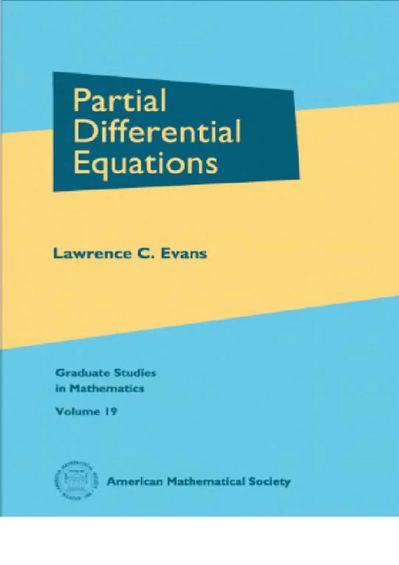
《Partial Differential Equations: Second Edition》
出版商:American Mathematical Society
出版年:2010
ISBN:9780821849743
适用范围:研究生
推荐强度:10
作者简介:Lawrence Craig Evans(1949-),美国数学家,研究领域为加州大学伯克利分校数学系教授。研究领域为非线性偏微分方程,主攻椭圆型方程。Evans还对非线性方程粘性解理论理论的发展、对随机最优控制理论中产生的Hamilton Jacobi Bellman方程的理解以及调和映射理论做出了重要贡献。Evans同时还作为本书的作者而闻名,《Partial Differential Equations》被认为是研究生阶段的经典教材。他还曾获得美国数学学会的Leroy P. Steele奖。2012年,他成为美国数学学会会员。2014年,他当选为美国国家科学院院士,还被列为ISI highly cited researcher。
书评:
Partial Differential Equations is a large book (over 700 pages) on an even larger subject. Part I of the book summarizes the classical theory of PDEs, starting with four canonical examples of partial differential equations: the transport equation, Laplace’s equation, the heat equation, and the wave equation. Part II covers the theory of linear PDEs in a modern setting, and Part III is devoted to nonlinear PDEs.
The book Partial Differential Equations is more unified than the subject of partial differential equations. There is no grand unified theory of PDEs, though there are unifying themes and common techniques. PDEs have been classified into three broad categories — elliptic, parabolic, and hyperbolic — though this classification breaks down much as the original classification of life into plants and animals broke down on closer inspection. First you discover that things like bacteria are not plants or animals. Then later you discover bacteria-like creatures (archaea) that are not so bacteria-like after all. Evans recognizes this problem with PDEs and mentions “the false impression that that there is some kind of general and useful classification scheme available in general.”
This book would be invaluable for a graduate student preparing to do research in PDEs; I wish I had had a copy in graduate school. (A couple years after I graduated I ran across a set of Evans’ lecture notes and greatly appreciated them. These notes have been subsumed into the present book.) Although the content is advanced, the book is a textbook, replete with numerous exercises. Evans has simplified his presentation slightly for the sake of pedagogy, not always seeking the weakest hypotheses or the strongest conclusions. As large as the book is, it would have been far larger had Evans not shown restraint. As he says in the preface
I have made a huge number of editorial decisions about what to keep and what to toss out, and can only claim that this selection seems to me about right.
Evans’ book is well written. It is a bit intimidating, despite the author’s approachable style, due to the vast subject area it surveys. However, Evans may be correct that the selection of material for the book is about right. The book is written for an audience that will value the book’s thorough presentation.
Partial Differential Equations是一本很厚的书(超过700页),但与偏微分方程这一领域相比却还是微不足道。书的第一部分总结了传统偏微分方程理论,从四类典型的偏微分方程讲起:输运方程、Laplace方程、热传导方程与波动方程。第二部分囊括了现代背景下的线性偏微分方程理论,第三部分则是关于非线性偏微分方程。
比起偏微分方程这一领域,本书要更加统一。虽然有共通的问题与技巧,但偏微分方程并没有统一的理论。偏微分方程可以被分为三类——椭圆方程、抛物方程与双曲方程——尽管这种分类方法在更仔细的观察下失效,就像把生物划分为动物和植物的分类法失效一样。首先你发现像细菌一样的东西不是植物或者动物。后来你又发现了与细菌类似却不那么像细菌的生物(古细菌)。Evans认识到了偏微分方程的这一问题,并提到“认为存在某种通用且有效的分类方法是错误的”。
本书对偏微分方程方向的研究生来说可谓无价之宝。我真希望我读研时能有一本这样的书(毕业几年后,我偶然看到Evans的一套讲稿,我十分欣赏它们。而这些内容已经被编入了本书)。虽然内容很深入,但本书是一本教科书,配以大量习题。Evans为了教学稍微简化了他的陈述,并不总是寻求最弱的条件假设或最强的结论。这本书虽然已经很厚了,但如果Evans没有克制自己的求知欲,它会变得更厚。正如他在序言中所说:“我在编辑本书时深思熟虑,保留什么,删掉什么,只能说这个选择在我看来十分正确”。
Evans的书写的很好。尽管写作风格平易近人,但其内容之广仍令人望而生畏。然而,关于内容的选择,可能Evans是对的。这本书是为那些珍视本书每一部分的读者而作。
点评人:John D. Cook(安德森癌症中心研究统计员)
资料整理:孟文斌
翻译:赵旭彤

《Partial Differential Equations:An Accessible Route through Theory and Applications》
作者:András·Vasy
出版商:American Mathematical Society
出版年:2016
ISBN:9781470418816
适用范围:高年级本科生,研究生
推荐强度:9
作者简介: András·Vasy(匈牙利数学家,现为斯坦福大学数学教授,也于斯坦福大学获得数学博士学位,曾于麻省理工大学任教。其主要研究领域为偏微分方程,于2012年入选美国数学学会会员,2017年获博修奖)
书评:
The study of partial differential equations (PDEs) is fundamental in pure and applied mathematics. PDEs also play an important role in the modeling and understanding of physical phenomena. It is no wonder, then, that there are a large number of textbooks dedicated to helping students at a variety of levels, and from a variety of disciplines learn the subject. András Vasy’s Partial Differential Equations: An Accessible Route through Theory and Applications is an admirable contribution to the list of textbooks on PDEs. Vasy’s book is carefully written and engaging; I would certainly recommend this book. Before delving into the specifics, I will compare the aim and spirit of this text with that of some other books on PDEs with which I am familiar.
At the undergraduate level, there are books such as Haberman’s Applied Partial Differential Equations and Strauss’s Partial Differential Equations An Introduction, which require little or no background in real analysis from the student. At the graduate level, one can find texts such as Introduction to Partial Differential Equations by Folland and Partial Differential Equations by Evans, both of which require a background in real analysis at the graduate level. Vasy’s Accessible Route is at a level in between. While Vasy does not avoid analysis, his book does not expect or require as much background in analysis such as that of Evans or Folland. Specifically, the book makes use of the basics of metric spaces, different types of convergence, the inverse function theorem and some other concepts and techniques from elementary real analysis, but does not use or develop measure theory or functional analysis. It is true that distributions, the basics of Hilbert space theory, and the space of functions L1 are introduced, but all in such a way that does not require very much sophistication in analysis on the part of the reader. In fact, I believe that Partial Differential Equations: An Accessible Route through Theory and Applications could inspire a student to want to learn more analysis. A common complaint I hear from students regarding undergraduate real analysis is that it is too much like calculus, which they believe they already know very well. Vasy’s book shows many ways in which elementary real analysis can be used to obtain interesting results in territory that is unfamiliar and perhaps even exciting.
Even with regular appeal to some basic ideas from real analysis, An Accessible Route through Theory and Applications does not eschew the concrete. Students learning from this book will have plenty of opportunities to see closed form solutions of specific PDEs. Long story short, I think that Vasy strikes an really nice balance between the abstract and the concrete at a level that is accessible to a wide variety of students. The book does not risk giving the impression that writing down closed form solutions to specific problems is the main thrust of study in PDE, but at the same time does not use sophisticated machinery to derive very general abstract results.
Like each of the other texts mentioned, this textbook is a survey of PDEs in the sense that elliptic, parabolic, hyperbolic, linear and nonlinear equations are all studied. Furthermore, the book gives the reader a good sense of what types of results one typically wants to obtain in the study of partial differential equations. This gives the book a modern feel even in the treatment of classical results.
There are several aspects of Partial Differential Equations: An Accessible Route through Theory and Applications that I really enjoy. For instance, the second chapter of the book motivates PDEs as arising in the study of physical phenomena. I especially like that the author explains how many PDEs arise as the Euler-Lagrange equation corresponding to a variational problem. In general, the topics discussed in the book are well motivated by the author, who appeals to geometry or other ideas to help the reader gain an intuition for what is going on with the big picture in solving or analyzing solutions to PDEs. I also enjoy the author’s use of energy methods for the wave, heat and Laplace equations. The treatment of energy for Laplace’s equation includes a derivation for a special case of the Poincaré inequality. It is nice that a student could be introduced to the utility of working with such inequalities before embarking on a more general study of inequalities related to the function spaces occurring in the study of PDEs.
Each chapter ends with a series of exercises for the reader. In keeping with the spirit of the book, there are both “solve the PDE”, and “show that” type problems. In some cases, the exercises extend the discussion in the main part of the chapter, while in others they provide the reader an opportunity to test their understanding of the principal concepts and techniques. I would suggest that an appropriate use for this textbook is in a graduate course in PDEs for first year graduate students, maybe even senior undergraduates. Why should a student interested in applied mathematics or PDEs wait until after a year of graduate analysis to get a taste of modern PDEs? Partial Differential Equations: An Accessible Route through Theory and Applications is an ideal book to expose students to modern PDE with minimal background. It is likely that a first year graduate student could read the majority of this text on their own although I suspect that most undergraduates would find independent reading of the text difficult. Furthermore, this book is likely to encourage students to want to learn more analysis such as functional analysis and operator theory.
The version under review is third edition and has been revised with both great expertise and care by Hugh L. Montgomery. According to the preface, sections 23-29 were completely rewritten.
偏微分方程是基础数学与应用数学的基石。它也同样在建模与理解物理现象中起到了重要的作用。因此也难怪有大量教材帮助不同层次的学生从各个方面学习这一学科。而András Vasy的Partial Differential Equations: An Accessible Route through Theory and Applications更是其中的佼佼者。Vasy的书既缜密严谨又引人入胜;我强烈推荐这本书。在深入探讨具体问题前,我想将这本书的写作目的与其中的思想与其他我熟悉的教材做一个比较。
在本科生阶段,有诸如Haberman的Applied Partial Differential Equations和Strauss的Partial Differential Equations An Introduction等教材,它们几乎不需要任何实分析知识。在研究生阶段,可以找到像Folland的Introduction to Partial Differential Equations以及Evans的Partial Differential Equations, 它们都需要研究生级别的实分析知识。Vasy的书介于它们之间。虽然Vasy没有避开分析知识,但它对此的需求不像Folland和Evans的书那么多。具体来说,这本书使用度量空间的基础知识,包括各种类型的收敛,反函数定理和一些其他基础实分析中的概念和技巧,但不包括测度论或泛函分析。诚然,本书介绍了分布、Hilbert空间的基本知识以及L1函数空间,但这些内容的讲述并不以读者掌握特别复杂的分析知识为前提。实际上,我认为Partial Differential Equations: An Accessible Route through Theory and Applications做到了这点. 我常从学生那里听到抱怨,认为实分析太像微积分,而后者他们已经非常熟悉。Vasy的书展示了许多方法,应用基本实分析知识来得到一些不熟悉,甚至令人惊叹的结论。
即使An Accessible Route through Theory and Applications包含着许多实分析的思想,它却也没有忽视具体问题。学习本书的学生有许多近距离接触具体偏微分方程解法的机会。简而言之,我认为 Vasy 在抽象和具体之间达到了一种非常巧妙的平衡,这种平衡对于各层次学生来说都是可以接受的。这本书没有给人留下“写下特定问题的特定解法是偏微分方程的研究主旨”的印象,但同时也没有使用复杂的技巧得出极为一般的抽象结论。
像之前提到的其他教材一样,本书是对偏微分方程的“调查报告”,研究椭圆、抛物、双曲、线性与非线性方程。而且,本书使读者培养出一种感觉,让他们知道在偏微分方程领域,什么样的结论是研究者们想要得到的。这使得本书即使专注于处理经典结论,但仍显露出现代偏微分方程的思想。
Partial Differential Equations: An Accessible Route through Theory and Applications有很多让我喜欢的地方。例如,书的第二章从物理现象给出研究偏微分方程的动机。我特别喜欢作者关于能从Euler-Lagrange方程和变分问题中得到多少偏微分方程的解释。而这种对研究动机的解释不是少数,作者对大部分内容都是这么做的,他运用几何学或其他的观点,来帮助读者直观地了解分析或求解偏微分方程时大体上发生了什么。我也很喜欢作者在处理波动方程、热传导方程和Laplace方程时对能量方法的使用。Laplace方程对能量的处理涉及Poincaré不等式一个特殊情况的推导。在对偏微分方程中与函数空间有关的不等式进行深入学习前,让学生了解这些不等式的作用是一件好事。
每章末附有一些习题。如同本书的核心思想那样,习题既包含对偏微分方程的求解,也包含一些命题的证明。一些习题是对正文内容的拓展,而也有一些习题测试读者对核心概念和求解技巧的理解。我建议在研究生一年级,甚至是高年级本科生的偏微分方程课程中适当地使用本书。为什么一个对应用数学或偏微分方程感兴趣的学生要等到从分析学中毕业后再去学习现代偏微分方程呢?Partial Differential Equations: An Accessible Route through Theory and Applications是一本理想的教材,它需要最少的背景知识,又将学生送入现代偏微分方程的世界。尽管我觉得大部分本科生独立阅读这本书很困难,但对一名一年级研究生来说,独立阅读本书不是什么不可能的事情。此外,本书鼓励学生学习更多分析知识,像是泛函分析与算子理论。
本篇书评针对的是经Hugh L. Montgomery细致修订的第三版。根据前言所说,第23节至第29节被完全重写。
点评人:Jason M. Graham(美国宾州斯克兰顿大学数学系助理教授,参与应用数学和数学家传记课程)
资料整理:冯远航
翻译:赵旭彤
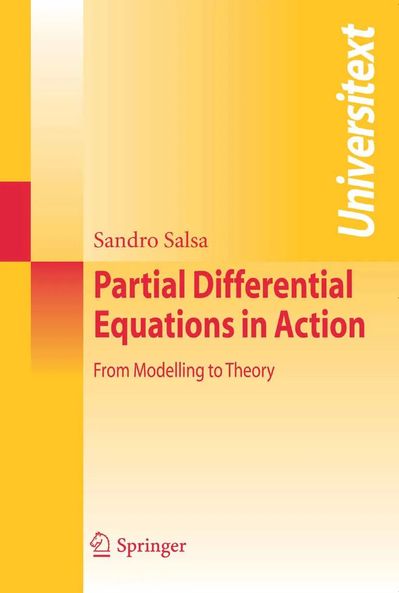
《Partial Differential Equations in Action: From Modelling to Theory》
作者:Sandro·Salsa
出版商:Springer
出版年:2010
ISBN:9788847007512
适用范围:高年级本科生,研究生
推荐强度:8
作者简介:Sandro·Salsa(意大利数学家,米兰理工大学数学教授、数学系主任。其于米兰大学获博士学位,主要研究领域为偏微分方程,特别是自由边界问题及非正则域边界行为,出版过多本数学专著)
书评:
I take this opportunity to say that I have not seen any other treatise as complete as this one for a first course in partial differential equations (PDEs). It is also a perfectly suitable textbook for upper level undergraduate and first year graduate students with interests in applied mathematics, physics, and engineering. As the title suggests, the book grows from modeling fundamental processes in applied science to a theoretical study of partial differential equations. It also provides a solid theoretical foundation for numerical methods, such as finite elements.
The first part of the book comprises five chapters and covers most fundamental PDEs with solvability techniques, along with applications to physics, engineering and finance. The heat equation, the Laplace equation and wave equation and their variants are all laid out extensively. Some elegantly presented important topics, which many other books of this kind seem to either miss or briefly touch on, are uniqueness results and the maximum principle for diffusion equations, symmetric random walks, multidimensional random walks with drift and reaction, global Cauchy theory, the Black-Scholes equation, and hedging and self-financing strategy. The Laplace equation is discussed so extensively that the book covers not only well-posed problems but also a widely used method of Peron using sub/superharmonic functions. Uniqueness of solutions of the Laplace equation in unbounded exterior domains is also included. A whole chapter on scalar conservation laws and first order equations is devoted to the study of the linear transport equation, traffic dynamics, weak solutions, entropy conditions, the Riemann problem, and the method of characteristics for quasilinear equations. The chapter on waves and vibration extensively covers the wave equation along with some classical models, such as the elastic membrane and small amplitude sound waves. An application to thermoacoustic tomography is included. A detailed treatment of linear water waves is provided.
In the second part of the book, the presentation of materials undergoes abstraction and covers modern techniques for analyzing and solving PDEs. Functional analytic tools are elegantly presented, and the need of weak solutions is clearly justified. Distributions and Sobolev spaces are included as needed. Variational methods for second order elliptic problems are developed. Evolution problems and steady state equations are extensively covered as well as the application of modern techniques, such as weak formulation and energy estimates. Uniqueness and stability of abstract parabolic problems are presented as are the Faedo-Galerkin approximations. Existence, uniqueness and stability of the wave equation are also included. A chapter on systems of conservation laws includes linear hyperbolic systems, quasilinear conversation laws, and the Riemann problem for p-systems.
Some parts of the book utilize Fourier series techniques or Lebesgue measure and integration, both of which are outlined in Appendices.
Another attractive feature of the book is its richness in exercises of various levels of difficulty. At the end of each chapter, an extensive list of problems is provided. Some problems are direct applications of the theory or methods developed in the text, and other problems are to complement the arguments in proofs. There are also problems that demand a deeper understanding of the theory and methods. Steps or hints are provided for such problems. The companion book Partial Differential Equations in Action Complements and Exercises contains solutions of all problems. The text is equipped with all necessary ingredients to be used as a textbook, and will be appreciated by anyone wishing for a very complete first course in partial differential equations from modeling to theory.
借此机会我必须要说,我还没有看到其他任何一本偏微分方程入门教材像这本一样全面。它也适合对应用数学、物理学与工程学感兴趣的高年级本科生与一年级研究生。如书名所述,本书从应用科学最基本的过程建模,过渡到偏微分方程的理论研究。它也为有限元等数学方法提供了坚实的基础。
本书的第一部分分为五个章节,涵盖了最基本的偏微分方程及其解法,以及它们在物理学,工程学与金融学中的应用。热传导方程,Laplace方程与波动方程以及它们的变形都被详细列出。还有一些其他教材很少提及的内容:扩散方程的唯一性结论与最大值原理、对称随机游动、带漂移和反应的多维随机游动、全局 Cauchy 理论、 Black-Scholes 方程、套期保值和自筹资金策略。Laplace方程的讨论涉及很多内容,不仅包括适定性问题,还包括了Peron的一种方法,使用了次调和/超调和函数。本书也研究了无界外区域上Laplace方程解的唯一性问题。在与标量守恒律和一阶方程有关的一章中,我们研究了线性运输方程、交通动力学、弱解、熵条件、Riemann问题和拟线性方程的特征方法。关于波动和振动的章节涵盖了波动方程以及一些经典模型,如弹性膜和小振幅声波。本书还介绍了热声层析成像技术的应用,并详细地处理了与线性水波相关的问题。
本书第二部分,在介绍抽象理论的同时也讨论了求解偏微分方程的现代技巧。泛函分析工具被自然地引入,同时本书也解释了为什么需要弱解,并介绍了分布与Sobolev空间,研究了二阶椭圆问题的变分方法,并讨论了演化问题与稳态方程,以及现代技巧的应用,如弱形式和能量估计。本书还给出了抽象抛物问题的解的唯一性和稳定性以及 Faedo-Galerkin 逼近,并讨论了波动方程解的存在性、唯一性与稳定性。关于守恒律方程组的一章包括线性双曲系统、拟线性守恒律与p-系统的Riemann问题。
本书的一些部分利用Fourier级数、Lebesgue测度与积分,它们都在附录中被概述。
这本书的另一个吸引人的地方是它丰富而难度各异的习题。每章末提供了一系列习题。有些问题是本书所发展的理论或方法的直接应用,有些问题是对正文证明中结论的补充。还有一些问题需要对理论和方法有更深入的理解,本书对这类问题提供了证明步骤或提示。配套教材Partial Differential Equations in Action Complements and Exercises包含所有习题的解答。本书作为教材已配备了所有必要的内容。对那些想要从建模到理论来全面学习偏微分方程的人来说,本书作为入门教材是很出色的。
点评人:Dhruba Adhikari(美国肯尼索州立大学数学系助理教授)
资料整理:冯远航
翻译:赵旭彤
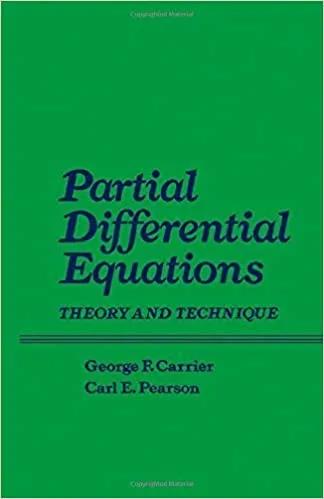
《Partial Differential Equations: Theory and Technique》
作者:George F. Carrier , Carl E. Pearson
出版商:Springer
出版年:1988
ISBN:9780121604516
适用范围:高年级本科生,研究生
推荐强度:9
作者简介: George F. Carrier(1918-2002,美国物理学家、工程师,于康奈尔大学获工程学博士学位,研究领域为工程力学,发表了100多篇论文及专著,其于1990年获美国最高科学荣誉——美国国家科学奖章。)
Carl E. Pearson(华盛顿大学航空航天学名誉教授,曾于哈佛大学任教,于布朗大学获博士学位。Pearson教授也活跃于工业界,曾于波音公司及理特管理顾问有限公司工作。Pearson教授是许多著作的作者,其中一些是应用数学领域的经典著作。)
书评:
Based on some of my current research into dynamic data assimilation in meteorology, I needed to review the theory of characteristics in solving partial differential equations. I was introduced to the subject in graduate school and used the text by Courant and Hilbert on mathematical physics. It served me well at the time but I recalled that there were few if any exercises in the book.
I knew the name George Carrier as a contributor to geophysical science and had briefly borrowed Carrier and Carl Pearson's book on PDEs from a colleague about 15 years ago and had gained from that brief reading. I then bought the book and started to work my way through it with special attention to the method of characteristics. I found the text material on this subject to be pointed and clear without any dross. The problems were exceptional including some challenging problems related to physical science that appealed to me. I found that when I started to work my way through the problems, I became captured by those problems that I couldn't solve quickly (within a matter of minutes). I let these problems rest but kept them in mind until I had another chance to attack them. Solving the problems gave a sense of understanding the concepts. These authors have a knack of finding problems that push the student beyond the text material in a challenging yet effective way.
As a textbook writer myself, I find that the biggest challenge is to offer problems to the student that hone their skills and yet allow them to gain a fuller understanding of the concepts that can bridge the gap between textbook understanding and research. I believe Carrier and Pearson have accomplished this lofty goal at the highest possible level.
点评人: John M. Lewis(美国肯塔基大学数学系名誉教授,研究领域为分析和偏微分方程)
书评:
基于我目前对气象学中动力数据同化的一些研究,我需要回顾一下解偏微分方程的特征理论。在读研究生时候,我接触到了这门学科,并且使用了Courant和Hilbert关于数学物理的教材。当时这本书给了我很大的帮助,但我记得书中几乎没有什么习题。
George F. Carrier对地理学有着杰出的贡献,我曾在十五年前从一位同事那里借到这本George F. Carrier和Carl E. Pearson的微分方程并受益良多。然后我买了这本书,开始用我自己的方式阅读它,特别注意特征方法。我发现关于这个主题的内容是一针见血而详尽清晰,没有任何糟粕。有一些超越正文范围的问题,包括一些对我有吸引力的与物理科学有关的具有挑战性的问题。我发现,当我开始以自己的方式解决这些问题时,我被那些我无法快速(在几分钟内)解决的问题吸引住了。我把这些问题搁置一边,但一直记在心里,直到有机会再次解决它们。解决这些问题让人感觉完全掌握了某种概念。作者擅长找到那些使学生有动力研究的问题,它们推动学生超越教材内容去自行探寻有效的解决方法。
作为一个教材编写者,我发现最大的挑战是给学生提供问题,磨练他们的技能,同时让他们获得对概念的更充分的理解,以弥合教材和实际研究之间的差距。我相信Carrier和Pearson已经完美完成了这个目标。
资料整理:冯远航
翻译:赵旭彤
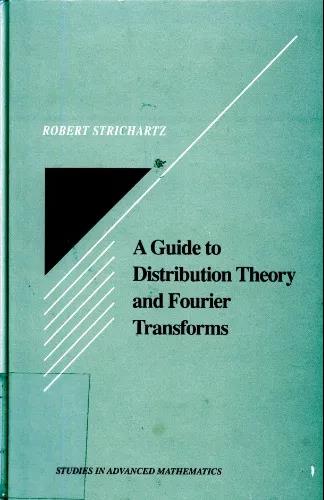
《A Guide to Distribution Theory and Fourier Transforms》
作者:Robert S. Strichartz
出版商:World Scientific Publishing Company
出版年:2003
ISBN:9789812384218
适用范围:高年级本科生,研究生
推荐强度:8
作者简介:Robert S. Strichartz(美国数学家,分析领域权威学者,于普林斯顿大学获数学博士学位,曾在麻省理工学院和康奈尔大学任教。Strichartz从事于谐波分析、分形分析和常微分方程研究,于1983年获得Paul R. Halmos – Lester R. Ford Award。)
书评:
The book is written very well. From the start it gives you very clear view of what the distributions are. In the next part of the book you are thaught very well how to deal with calculations using distributions. The examples are picked in a very didactic way, simple but they show you the crucial points of calculations and the material is treated indepth. You should know, dustribution theory is not a simple theory, it is based on Lebesque theory of measureable sets, so try read the basics of this theory first and then return to the book.
If you are accustomed to Fubini theorem, Fourier transforms, a set measure then you may start reading this book. The next might be Zemanian Distribution Theory and Transform Analysis - old but still very good for the practical use. There are given many examples in this book hardly met in other ones like Fourier transform of special functions from a beginner point of view, direct solutions of differential equations via Fourier transforms - there are distribution additions yet etc. The exercises are of medium difficulty, but feasible for a student and they are very didactic.
In addition to that there given many physical examples of distribution and Fourier transform using, very clearly explained. Thus, finally, this is the very good book for an advanced student.
书评:
这本书写得很好。从一开始,他就给了你一个关于分布非常清晰的认识。在下一部分,本书细致地教导你如何用分布来计算。这些例子经过精心挑选,清晰易懂,但它们又向你展示了计算的关键点并且十分深入。你应当了解到,分布理论不是一套简单的理论,它基于Lebesgue可测集理论。所以先试着阅读这一理论的基础,再来阅读本书吧。如果你熟悉Fubini定理,Fourier变换与集合的测度,那么你就可以开始阅读本书了。下一部分可能是Zemanian分布理论和变换分析——经典,却仍在实际中有着很好的应用。本书给出了许多其他教材中难以见到的例子,像从一个初学者观点来给出一些特殊函数的Fourier变换,通过Fourier变换来得到一些微分方程的解——当然有一些分布的条件。这些练习难度适中,并能从中学到很多东西,学生们可以灵活选择。
除此之外,还给出了许多物理上的使用分布和Fourier变换的例子,它们都被解释得非常清楚。总而言之,对基础知识扎实的学生来说,这是一本非常好的教材。
点评人:P. Tatrocki(波兰数学爱好者,波兰国家物理中心研究员)
资料整理:冯远航
翻译:赵旭彤
